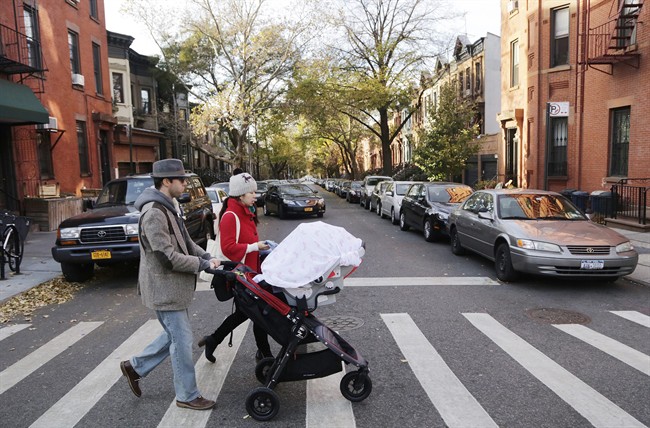Some Canadian families will definitely benefit from the Liberal government’s changes to tax credits, a new report has found, but others aren’t so lucky.

The Parliamentary Budget Officer, responsible for providing independent financial advice for Parliament, on Thursday released the results of its study into how budget 2016 will affect eight types of families with children. The report was requested by Conservative MP for Elgin-Middlesex-London, Karen Vecchio.
Vecchio herself provided PBO with the family incomes, plus the number and ages of any children.
The PBO report found that even though the Liberals lowered taxes for people in the middle income-bracket, for most of the model families it won’t be enough to offset the increase in taxes they’ll see as a result of the government cancelling the Family Tax Cut credit, reducing the Children’s Arts amount and reducing the Children’s Fitness tax credit.
WATCH: Where will marijuana tax money go?

Only three of the eight families will end up paying less in federal tax as a result of budget 2016, and one of them only saves $14 once all the numbers are crunched. The other five families will be paying more.

Get weekly money news
Interestingly, the biggest federal tax savings (over $1,400) occur the family with a household income of $180,000 – more than twice the median income of Canadian families.
Disposable income goes up
The numbers on disposable income are a bit more rosy. The results show that once tax credits (either given or taken away) are factored in, two-children families earning between $74,000 and $89,000 would indeed see an increase in their disposable income.
“This is largely due to the increase in the total income for these families from the introduction of the Canada Child Benefit,” the PBO notes, referring to the much-publicized Liberal cheques that replaced the Conservative credits used in the past.
The age of the kids in a home matters too, the report adds.
“Families with younger children will have more disposable income than families with older children under the budget measures,” it reads.
However four of the higher-earning (between $180,000 and $250,000 total) hypothetical families which also have two children will see a reduction in disposable income. As the Liberals stated when they unveiled the budget, the outcome depends largely on the amount of money a household brings in. The more your household makes, the less of a boost you’ll be getting from Ottawa, the report confirms.
READ MORE: Liberals facing backlash over loss of ‘Harper-era’ tax credits
WATCH: Finance Minister: Child tax credit helps 9 in 10 Canadian families

The PBO was careful to note that the eight families are models presented by Vecchio for analysis, and “not necessarily representative of the population.”
Here’s what each family looks like:
- Family 1: Two-income family with two children aged five and under. One parent earns $20,000 and the other earns $54,000
- Family 2: Two-income family with two children aged 10 and 12. One parent earns $20,000 and the other earns $54,000
- Family 3: One-income family with two children aged five and under. Employment income: $89,000
- Family 4: One-income family with two children aged 10 and 12. Employment income: $89,000
- Family 5: Two-income family with two children aged five and under. One earns $60,000 and the other earns $120,000
- Family 6: Two-income family with two children aged 10 and 12. One earns $60,000 and the other earns $120,000
- Family 7: One-income family with two children aged five and under. Employment income: $250,000
- Family 8: One-income family with two children aged 10 and 12. Employment income: $250,000
The PBO assumed that the lower-earning spouse in the families claimed the Universal Child Care Benefit in tax returns, and that the higher-earning spouse claimed the full Children’s Arts credit and the full Children’s Fitness credit. Not every family fits this mold, officials acknowledged.

You can read the full report here.


Comments